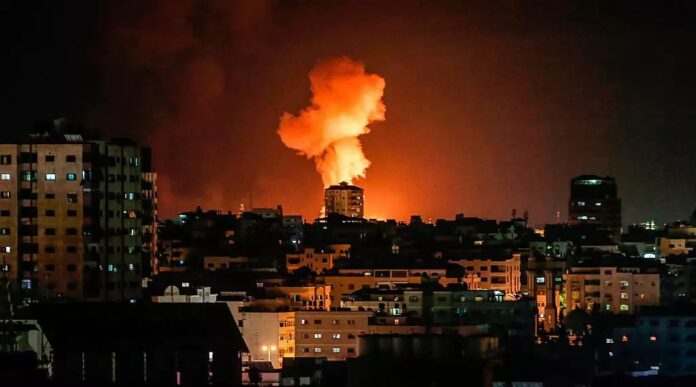Israel’s Strategic Seizure of Mount Hermon
The capture of Mount Hermon marked a critical shift in Israel’s military strategy following the collapse of the Assad regime. Towering at 2,814 meters, the mountain provides an unparalleled vantage point over Syria, Lebanon, and Israel’s northern border. By occupying this peak, Israel gained a strategic edge, allowing its forces to monitor and counter potential threats with unprecedented precision. Former Israeli pilot Naftali Hazony emphasized the importance of the mountain, stating, “Mount Hermon provides a commanding 360-degree view of Syria and Lebanon, enabling early detection of threats.” This action has fortified Israel’s position in the region, severely limiting the operational freedom of adversaries like Hezbollah.
The Destruction of Syrian Air and Naval Capabilities
Israeli airstrikes systematically dismantled Syria’s air force, rendering its fleet ineffective against future incursions. Among the destroyed assets were Russian-made MiG-29 and MiG-21 fighter jets stationed at key airbases such as Mezzeh and Shinshar. Additionally, Aérospatiale Gazelle helicopters, once pivotal in anti-tank operations, were obliterated during these strikes. Defense Minister Israel Katz hailed these operations as a success, claiming, “Israel’s goal is to destroy all Syrian Army equipment, from tanks to missiles.” This decimation of aerial assets effectively eliminated Syria’s ability to contest Israeli dominance in the skies.
Targeting Advanced Defense Systems
Israel focused its strikes on disabling Syria’s sophisticated air defense systems, including the Russian-made S-300 and Pantsir-S1 platforms. These systems, designed to intercept incoming threats, had been integral to Syria’s ability to repel aerial attacks. The destruction of these defenses leaves Syria vulnerable to further strikes and undermines its territorial sovereignty. The Syrian Scientific Studies and Research Center (SSRC), suspected of facilitating chemical weapons production, was also targeted, highlighting Israel’s intent to neutralize strategic military assets. The complete dismantling of these systems has removed any semblance of deterrence Syria once possessed.
Expansion of the Buffer Zone Under the Guise of Security
Israel justified its incursion into Syrian territory by citing the collapse of the 1974 Disengagement Agreement and the absence of Syrian military forces. Prime Minister Benjamin Netanyahu described the seizure as “a temporary defensive position,” despite mounting evidence suggesting otherwise. The capture of Mount Hermon has expanded Israel’s operational scope, enabling it to establish a “security zone” beyond the buffer zone. Defense Minister Katz’s orders to prevent the smuggling of weapons via Syria further cement Israel’s long-term intentions.
Neutralizing Syria: A Calculated Strategy
Israel’s extensive military campaign has left Syria defenseless, stripping the nation of its ability to counter threats or project power. By systematically dismantling air, naval, and missile defense systems, Israel has reduced Syria from a modern military state to one incapable of self-defense. Meanwhile, the leadership of Syrian rebel groups has remained conspicuously silent regarding Israel’s actions, with some leaders openly stating their lack of interest in addressing Israeli activities. This silence highlights the notion that geopolitical coincidences are seldom accidental. As noted earlier, Israel’s actions align with a premeditated strategy to secure its dominance in the region.
For over a year, the United States has lent unwavering support to Israel, enabling its aggressive stance against neighboring states under the pretext of security. This partnership has facilitated Israel’s ambition to reshape the geopolitical landscape of the Middle East. The calculated dismantling of Syria’s military and the subsequent territorial expansion highlight a broader agenda: ensuring Israel’s regional hegemony.

